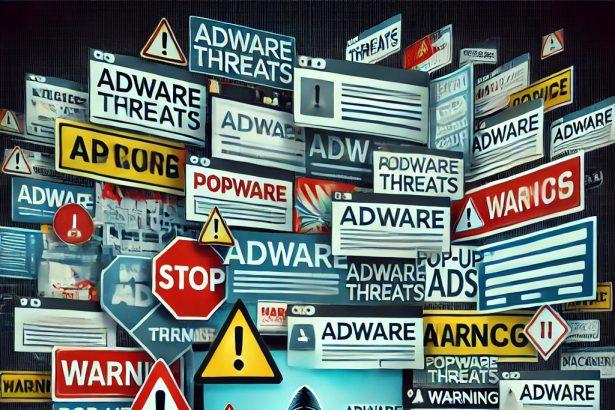Quicknetshift.co.in is a deceptive website that tricks users into enabling intrusive browser notifications through fake CAPTCHA prompts. Once permission is granted, it bombards users with unwanted ads, redirects, and potentially harmful content. This behavior classifies it as a browser hijacker and adware threat, compromising user experience and system security.
Threat Overview
Quicknetshift.co.in operates as a browser hijacker, manipulating browser settings to deliver unwanted advertisements and redirect users to dubious websites. It often infiltrates systems through deceptive pop-up ads and bundled software installations.
Threat Details
| Threat Type | Browser Hijacker / Adware |
|---|---|
| Associated Domain | quicknetshift.co.in |
| Detection Names | Seclookup (Malicious), Sophos (Spam) |
| Symptoms of Infection | Unwanted pop-up ads, browser redirects, decreased browsing speed |
| Damage | Privacy issues, potential malware infections, decreased system performance |
| Distribution Methods | Deceptive pop-up ads, bundled software installations |
| Danger Level | Medium |
| Removal Tool | SpyHunter |
In-Depth Analysis
How Did I Get Infected?
Users typically encounter Quicknetshift.co.in through:
- Clicking on deceptive pop-up ads.
- Installing software bundles that include adware components.
- Visiting compromised or malicious websites that redirect to Quicknetshift.co.in.
Once on the site, users are presented with a fake CAPTCHA prompt. Clicking “Allow” grants the site permission to send browser notifications, leading to persistent ads and redirects.
What Does It Do?
After gaining notification permissions, Quicknetshift.co.in:
- Displays intrusive advertisements directly on the desktop.
- Redirects browser sessions to potentially malicious websites.
- Tracks browsing behavior, leading to privacy concerns.
- May install additional unwanted software or malware.
Should You Be Worried?
Yes. While the primary function is to generate ad revenue, the intrusive nature of the ads, potential for additional malware infections, and privacy implications pose significant risks. Immediate action is recommended to remove the threat and restore system integrity.
Manual Adware Removal Process (Windows & Mac)
Step 1: Identify and Uninstall Suspicious Applications
For Windows Users
- Open Task Manager by pressing
Ctrl + Shift + Esc. - Navigate to the “Processes” tab and search for unknown or high-resource-consuming processes.
- If you detect anything suspicious, right-click and select “End Task.”
- Go to
Control Panel>Programs>Programs and Features. - Locate and uninstall any unfamiliar programs.
For Mac Users
- Open
Finderand click onApplications. - Identify and move any suspicious applications to the
Trash. - Empty the
Trash. - Check
System Preferences>Users & Groups>Login Itemsfor unknown startup programs and remove them.
Step 2: Remove Malicious Browser Extensions
Google Chrome
- Open Chrome, click
Menu(three dots) >Extensions. - Locate and remove unknown extensions.
- Reset Chrome:
Settings>Reset settings> “Restore settings to their original defaults.”
Mozilla Firefox
- Click
Menu>Add-ons and themes. - Remove suspicious extensions.
- Reset Firefox:
Help>More troubleshooting information> “Refresh Firefox.”
Safari (Mac)
- Open Safari, go to
Preferences>Extensions. - Delete unknown extensions.
- Reset Safari:
History> “Clear History.”
Microsoft Edge
- Click
Menu>Extensions. - Remove any unfamiliar extensions.
- Reset Edge:
Settings>Reset settings> “Restore settings to their default values.”
Step 3: Delete Adware-Associated Files and Folders
For Windows Users
- Press
Win + R, type%AppData%, and press Enter. - Locate and delete suspicious folders.
- Repeat for
%LocalAppData%,%ProgramData%, and%Temp%.
For Mac Users
- Open Finder and press
Shift + Command + G, then enter~/Library/Application Support/. - Remove any suspicious folders.
- Repeat for
~/Library/LaunchAgents/,~/Library/LaunchDaemons/, and~/Library/Preferences/.
Step 4: Flush DNS Cache to Remove Adware Traces
For Windows Users
- Open
Command Promptas Administrator. - Type
ipconfig /flushdnsand press Enter.
For Mac Users
- Open
Terminal. - Enter
sudo killall -HUP mDNSResponderand press Enter.
Step 5: Restart Your System
Perform a reboot to apply the changes and ensure the removal process is complete.
Automatic Adware Removal Using SpyHunter (Windows & Mac)
For an effortless and effective solution, use SpyHunter, a powerful anti-malware tool designed to detect and remove adware completely.
Step 1: Download SpyHunter
Click the link to download SpyHunter: Download SpyHunter Here.
Step 2: Install SpyHunter
Follow the installation guide based on your operating system:
For Windows Users
- Run the downloaded
.exefile. - Follow the installation instructions.
- Launch SpyHunter and allow it to update its malware database.
For Mac Users
- Open the downloaded
.dmgfile. - Drag and drop SpyHunter into
Applications. - Open SpyHunter and let it update its database.
Step 3: Scan and Remove Adware
- Open SpyHunter.
- Click
Start Scan. - Wait for the scan to complete.
- Click
Fix Threatsto remove detected malware.
Step 4: Restart Your Computer
After SpyHunter removes all threats, restart your system to ensure all adware components are fully removed.
Conclusion
Quicknetshift.co.in is a browser hijacker that compromises user experience and system security through deceptive tactics. By tricking users into enabling notifications, it delivers a barrage of unwanted ads and potential malware. Utilizing a reputable removal tool like SpyHunter is essential to eliminate this threat and safeguard your system.




